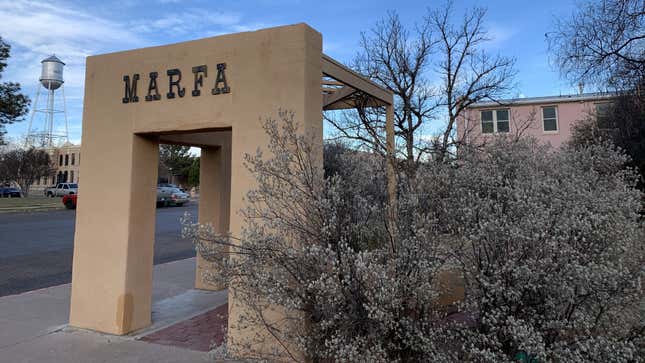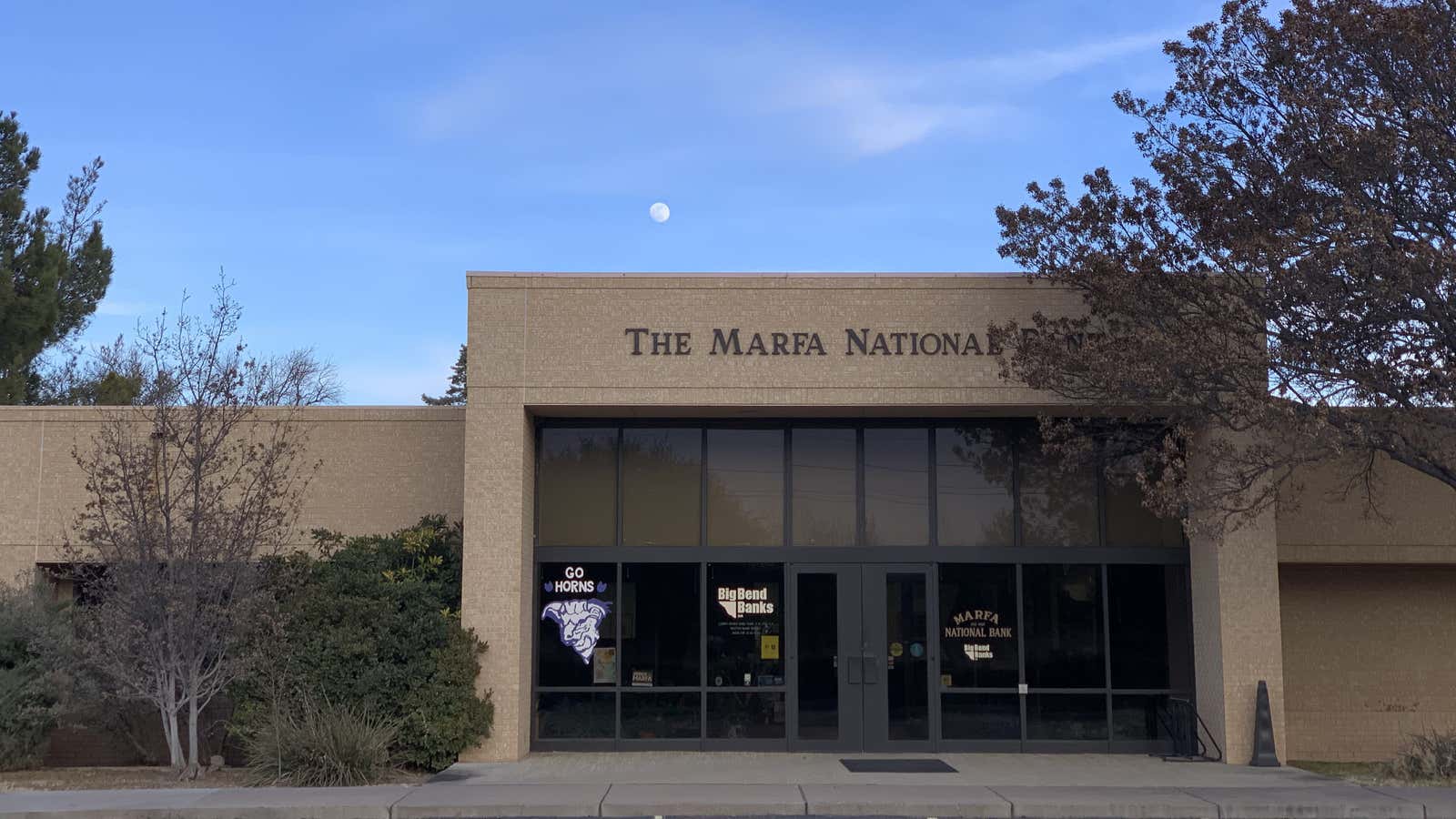In Marfa, Texas, you’re more likely to meet a hipster tourist from Brooklyn than a cowboy. In the decades since Giant, the epic Western about a rich cattle rancher, was filmed there, the town of about 1,700 people has become an unlikely paradise for the arts, with streets that are lined with galleries, boutique hotels, and coffee shops.
The hipsters disappeared last month when much of the world’s population went into lockdown to try and contain the coronavirus pandemic. Some restaurants closed immediately. Others tried to make ends meet by selling takeout orders but still ended up shuttering, said Chip Love, president of Marfa National Bank. Most of the workers were out of a job within two weeks.
Tourism has become a big part of the local economy, Love said in a phone interview: “It didn’t taper off—it stopped in a week.”
Help is on the way, but it’s far from certain that it will get there in time. An immense lending program of more than a quarter trillion dollars was signed into law late last month in hopes of shoring up small businesses that employ nearly half of the American workforce. The program of loans, backed by the Small Business Administration and part of the $2 trillion Cares Act, is meant to go live as soon as Friday.
Banking giant JPMorgan Chase is among the biggest providers of SBA loans, but smaller institutions make up much of the market’s core. The US has more than 4,000 community banks that provide about half of the country’s borrowing for smaller enterprises, according to the trade group Independent Community Bankers of America. They’ll be needed to funnel funds into everything from dry cleaners to optometrist clinics.
The SBA will guarantee low-interest bank loans up to $10 million, which can be forgiven if used for immediate payroll costs—hence the name Paycheck Protection Program. The loans are intended for any business with fewer than 500 employees, including self-employed people, and are available retroactively from Feb. 15 so that workers can be rehired.
Speed is essential. The faster money can get to these entrepreneurial minnows the better; preventing mass layoffs and bankruptcies will, in theory, help the American economy get going again more quickly when the outbreak has been contained. The average small enterprise has about 27 days worth of cash reserves—many of them much less than that—putting them at risk of going out of business for good.

Getting the money out quickly won’t be easy. The SBA handled about $30 billion of small business lending last year, and now it’s charged with pumping out $350 billion as soon as possible. Marfa National Bank’s Love says he wants to participate in the program. As of March 31, like all the other banks, he was waiting for more guidance from the federal government. Later that day the Treasury and the SBA began releasing the much anticipated guidance and application information.
Love is also concerned about the capacity of the SBA, and others, to handle the tsunami. “The customers certainly are asking for it,” he said.
America’s community banks provide a huge swath of business loans in the US, but they sometimes “get lost in the shuffle,” said Bill Isaac, former chairman of the Federal Deposit Insurance Corporation (FDIC). He pointed out that these smaller lenders, typically defined as a bank with $10 billion in assets or less, already have loans to small businesses that aren’t backed by the government.
A large chunk of that borrowing may require forbearance, meaning the community banks themselves are likely to come under stress. These lenders may end up needing support, too.
Going digital
Community banks specialize in lending to small entrepreneurs, and many have been in their communities for generations, says Paul Merski, group executive vice president at ICBA in Washington. Just about every loan is slightly different, tailored to the local market. A dry cleaner in North Dakota will have different cash flow and seasonal characteristics than one in Massachusetts.
“These banks have supported their communities through recessions and depressions and previous pandemics and hurricanes and on and on,” Merski said. (Marfa National Bank opened its doors in 1907, seven years before the start of World War I.)
While banking, like just about everything, has been going electronic for years, some community lenders still do their lending the old fashioned way, with face-to-face interviews. With widespread quarantines and social distancing, simple things like getting a signature notarized or physical appraisals of property are suddenly a challenge. Merski says there are ways to adapt with electronic signatures, and by temporarily relaxing rules on appraisals by using recent tax records instead.
“That’s presenting some challenges but the banking sector has really been moving to an electronic format,” he said. “The real challenge will be the sheer volume of applications that are coming in and just the logistics of processing the volume.”
So-called fintech lenders, which provide automated borrowing, say they can get the money out more quickly than traditional financial companies. Financial Innovation Now, a trade group that includes companies like Square and PayPal as members, wrote a letter to Congress, urging policy makers to include alternative lenders in the emergency lending programs. The group claims its members can dish out $100 billion, some of it in weeks, even though that’s 10 times as much as they have lent in recent years.
Isaac, who is now co-chairman of the Isaac | Milstein Group, said he would be wary of relying on newer lenders that haven’t been tested by a recession. “They don’t have a long track record,” he said.
In Marfa, Love is a practitioner of old-school relationship banking. While handshakes are off limits these days, he says they can find a way to get loans out as long as they’re able to handle all the mechanical details of the emergency borrowing.
“In a little town like this, we can figure out how to get a signature,” he said.
